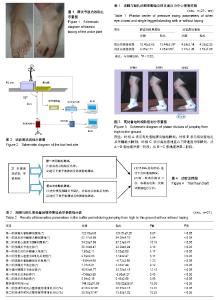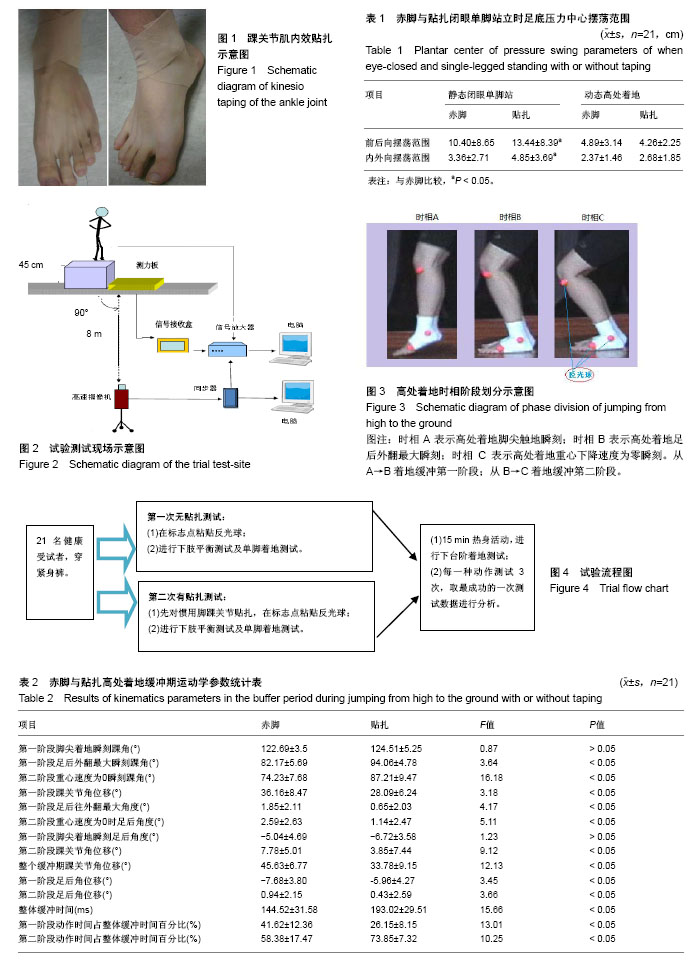| [1] 罗炯,郑兵,解浩东.肌内效贴扎对足踝生物力学特征影响的理论研究与应用进展[J].中国组织工程研究, 2017,21(28): 4570-4575.[2] 柴松,余波,陈文华.软组织贴扎技术预防及治疗踝关节扭伤的临床应用进展[J].中国康复理论与实践,2015,21(3):284-287.[3] Kim CY, Choi JD, Kim HD. No correlation between joint position sense and force sense for measuring ankle proprioception in subjects with healthy and functional ankle instability. Clin Biomech (Bristol, Avon). 2014;29(9):977-983. [4] Zhang SN, Wortley M, Silvernail JF, et al. Do ankle braces provide similar effects on ankle biomechanical variables in subjects with and without chronic ankle instability during landing? J Sport Health Sci. 2012;1(2):114-120.[5] McGuine TA, Greene JJ, Best T, et al. Balance as a predictor of ankle injuries in high school basketball players. Clin J Sport Med. 2000;10:239-244.[6] Pérez-Soriano P, Lucas-Cuevas AG, Aparicio-Aparicio I, et al. Effects of Kinesiotape taping on plantar pressure and impact acceleration during walking. Sci Sports. 2014;29:282-287.[7] Tu SJ, Woledge RC, Morrissey D. Does ‘Kinesio tape’ alter thoracolumbar fascia movement during lumbar flexion? An observational laboratory study. J Bodyw Mov Ther. 2016; 20(4):898-905. [8] Yi CH, Brumt D, Kim HD, et al. Effect of ankle taping and exercise on emg and kinetics during landing. J Phys Ther Sci. 2003;15:81-85.[9] Evangelopoulou E, Twiste M, Buckley JG. Restricting ankle motion via orthotic bracing reduces toe clearance when walking over obstacles. Gait Posture. 2016;43:251-256.[10] McCaw ST, Cerullo JF. Prophylactic ankle stabilizers affect ankle joint kinematics during drop landings. Med Sci Sports Exerc. 1999;31:702-707.[11] Riemann BL, Schmitz RJ, Gale M, et al. Effect of ankle taping and bracing on vertical ground reaction forces during drop landings before and after treadmill jogging. J Orthop Sports Phys Ther. 2002;32:628-635.[12] Vanwanseele B, Stuelcken M, Greene A, et al. The effect of external ankle support on knee and ankle joint movement and loading in netball players. J Sci Med Sport. 2014;17(5): 511-515.[13] Verhagen EA, Beek AJ, Mechelen W. The effect of tape,brace and shoes on ankle range of motion. J Sports Med. 2001; 31(9):667-677.[14] Huang TS, Ou HL, Lin JJ. Effects of trapezius kinesio taping on scapular kinematics and associated muscular activation in subjects with scapular dyskinesis. Journal of Hand Therapy, In Press, Corrected Proof, Available online 28 November 2017.[15] Brophy RH, Staples JR, Motley J, et al. Young females exhibit decreased coronal plane postural stability compared to Young Males. HSSJ. 2016;12:26-31.[16] Barkoukis V, Sykaras E, Costa F, et al. Effectiveness of taping and bracing in balance . Percept Mot Skills. 2002;94:566-574.[17] Zanca GG, Grüninger B, Mattiello SM. Effects of Kinesio taping on scapular kinematics of overhead athletes following muscle fatigue. J Electromyogr Kinesiol. 2016;29:113-120.[18] Martínez-Gramage J, Merino-Ramirez MA, Amer-Cuenca JJ. Effect of Kinesio Taping on gastrocnemius activity and ankle range of movement during gait in healthy adults: A randomized controlled trial. Phys Ther Sport. 2016;18: 56-61.[19] Haight DJ, Russell Esposito E, Wilken JM.Biomechanics of uphill walking using custom ankle-foot orthoses of three different stiffnesses. Gait Posture. 2015;41:750-756.[20] Mason-Mackay AR, Whatman C, Reid D, et al. The effect of ankle bracing on landing biomechanics in female Netballers. Phys Ther Sport. 2016;20:13-18. |



